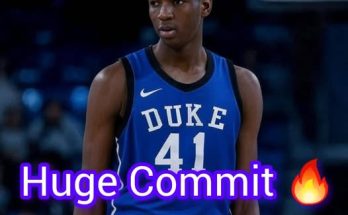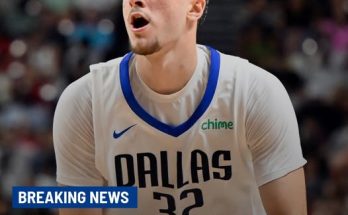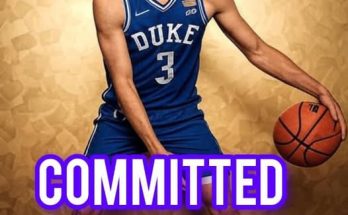Shedeur Sanders, the highly touted quarterback known for his poise, accuracy, and playmaking ability, suffered a setback during Wednesday’s practice that has fans and analysts alike expressing concern about his availability for the upcoming season. According to team sources, Sanders injured his oblique while throwing early in practice, prompting the coaching staff to hold him out for the remainder of the session as a precautionary measure. The timing of the injury is particularly unfortunate given that the team is entering a critical period of preparation, with preseason games and intense practice sessions designed to fine-tune offensive schemes and establish team chemistry. While the full extent of the injury has yet to be revealed, oblique injuries are notoriously tricky for quarterbacks, as they impact the core muscles responsible for rotational movement, including throwing mechanics. Any strain or tear in this area can lead to decreased velocity, accuracy, and overall comfort when attempting to deliver the football, making even minor oblique issues a source of concern for coaching staffs and fantasy football enthusiasts alike.
Oblique injuries are a frequent risk for quarterbacks who rely on their throwing motion, particularly those who exhibit the kind of athleticism and arm strength that Sanders is known for. The oblique muscles, located along the sides of the abdomen, play a vital role in generating torque and stabilizing the core during a throw. When these muscles are compromised, quarterbacks may experience pain or tightness with rotational movements, making it difficult to plant their feet, engage their hips, and deliver the ball with precision. This means that even a minor oblique strain can ripple across multiple facets of a quarterback’s performance, from deep throws to quick timing passes. For Sanders, who has consistently demonstrated the ability to extend plays and make throws from various angles, this type of injury could temporarily limit his mobility in the pocket and his ability to execute the full breadth of his playbook.
The coaching staff’s decision to remove Sanders from practice immediately reflects a cautious approach designed to prevent the injury from worsening. Quarterbacks recovering from oblique injuries often require careful management, including modified practice schedules, targeted stretching, and strength work to rebuild stability and prevent compensatory injuries in other areas of the body. By holding Sanders out for the remainder of Wednesday’s practice, the team signaled that they are prioritizing long-term health over short-term practice repetitions, a strategy that can pay dividends in the latter stages of the season. The team’s medical personnel are expected to conduct a thorough evaluation, which may include imaging, functional assessments, and strength tests, to determine the severity of the strain and the projected timeline for Sanders’ return to full-contact work.
The impact of Sanders’ injury extends beyond the individual quarterback to the broader dynamics of the team’s offense. The quarterback is the linchpin of any offense, particularly one built around a high-powered passing attack that relies on timing, precision, and adaptability. Sanders’ absence in practice not only affects his own preparation but also alters the rhythm of the entire offensive unit. Receivers, offensive linemen, and supporting skill players rely on consistent repetitions with their starting quarterback to develop chemistry, timing, and trust. When a key player is sidelined, even for a single practice, it can disrupt that flow and force the coaching staff to adjust drills, install temporary backups, and monitor overall team efficiency. For younger players or those competing for starting roles, Sanders’ absence could also create a temporary opportunity to step up, which adds another layer of complexity to the team’s preparation strategy.
Oblique injuries are often unpredictable in their recovery timelines, and the response of the individual athlete plays a significant role in determining the speed of return. Some quarterbacks experience a minor strain and are able to return within a week or two with proper rest and rehabilitation, while others face a more prolonged recovery if the injury involves tearing or persistent inflammation. Effective rehabilitation typically involves a combination of physical therapy, core strengthening, and gradual throwing progressions. The team’s medical staff will likely implement a tailored program for Sanders, starting with non-throwing exercises that maintain cardiovascular fitness and upper-body strength, gradually progressing to light throws, and eventually reinstating full practice and game-speed repetitions once pain-free motion is confirmed.
For fans and analysts tracking Sanders’ development, this injury raises important questions about risk management and workload. As one of the most closely watched quarterbacks in college football, Sanders carries the weight of high expectations, both in terms of individual performance and team success. His ability to stay healthy and maintain consistent availability will be a critical factor in the team’s overall offensive output. Coaches often face the delicate balance of pushing their star players to maximize preparedness while protecting them from overuse or injury. In Sanders’ case, early detection and conservative management of the oblique strain could ultimately safeguard his ability to perform at peak level during the season, reinforcing the principle that careful injury management is as strategic as any play call on the field.
The timing of Sanders’ injury also has implications for scouting, draft projections, and professional aspirations. Quarterbacks in Sanders’ position are constantly under scrutiny, as scouts and evaluators closely monitor performance, durability, and leadership qualities. Even minor injuries can prompt questions about resilience and long-term sustainability, making it essential for Sanders to recover fully and demonstrate that he can perform at his high standard without compromise. This situation provides an opportunity to observe the team’s approach to player health and its commitment to protecting valuable assets, which is increasingly relevant in modern football culture, where the emphasis on longevity and injury prevention has become paramount.
Historically, oblique injuries have affected many prominent quarterbacks, providing valuable lessons on managing similar situations. Some players return quickly with no lasting effect, while others experience lingering discomfort that temporarily hampers performance. In Sanders’ case, his athleticism, strong mechanics, and disciplined approach to training will be assets in his recovery. By adhering to medical guidance, modifying his throwing routine, and gradually increasing intensity, Sanders can minimize the risk of setbacks and regain full functionality efficiently. The support system provided by teammates, coaches, and trainers will also play a crucial role in fostering a smooth rehabilitation process.
The mental aspect of recovering from an injury should not be underestimated. Quarterbacks must maintain confidence in their body’s ability to execute throws under pressure while adjusting to any temporary limitations. Sanders’ experience and composure are likely to aid in navigating the psychological challenges of a brief setback, as maintaining focus and staying engaged with team meetings, film study, and game planning allows a player to continue contributing without aggravating the injury. Mentally remaining in the flow of preparation while physically recovering ensures that Sanders remains sharp and ready to resume full participation when cleared.
While the oblique injury represents a temporary obstacle, it also underscores the importance of depth within the roster. Teams that can rely on capable backups and maintain practice continuity during short-term absences are better equipped to withstand the inevitable challenges of a long season. Coaches can rotate quarterbacks during practice, simulate game scenarios with substitute players, and adjust offensive drills to maintain readiness, all of which help mitigate the impact of Sanders’ absence. The resilience of the team, combined with strategic planning, can prevent a single injury from derailing the overall preparation process.
In conclusion, Shedeur Sanders’ oblique injury during Wednesday’s practice is a notable development that requires careful monitoring and management. The team’s decision to remove him from practice immediately reflects a commitment to protecting their star quarterback and ensuring his long-term health. Oblique injuries present unique challenges for quarterbacks, affecting rotational mechanics, throwing power, and overall comfort, making a conservative approach to rehabilitation essential. The impact extends beyond Sanders himself, influencing offensive rhythm, team chemistry, and broader strategic considerations. However, with proper medical oversight, targeted rehabilitation, and mental focus, Sanders is well-positioned to recover fully and return to the field without lasting consequences. As fans, analysts, and teammates watch closely, the priority remains ensuring that Sanders can continue to lead his team effectively while minimizing the risk of aggravating the injury, highlighting the delicate balance between performance and player health in modern football. His response to this setback, along with the team’s support and depth management, will ultimately determine how smoothly the offense adapts and maintains its competitive edge moving forward.
Sanders’ injury also serves as a reminder of the physical demands placed on elite quarterbacks and the importance of core strength and flexibility in mitigating injury risk. By incorporating preventative measures, such as targeted core exercises, mobility work, and workload monitoring, quarterbacks can reduce the likelihood of similar injuries occurring in the future. For Sanders, this may become a focal point in his ongoing training regimen, helping him maintain durability as he continues to compete at a high level. The team’s handling of the situation sets a precedent for responsible injury management, reinforcing the idea that protecting star players is a strategic imperative, not just a medical concern.
Ultimately, while the news of Sanders’ oblique injury is a temporary setback, the measured response by the coaching staff, medical personnel, and the player himself suggests a pathway to full recovery. Maintaining patience, focusing on rehabilitation, and supporting team continuity are key elements in ensuring that Sanders returns to the field at full strength. The coming days will provide more clarity regarding the severity of the strain and the timeline for his return to full participation, but early indicators point toward a cautious yet proactive approach aimed at minimizing risk while preserving performance. As the season approaches, all eyes will remain on Sanders, both for his recovery progress and for the impact his presence—or temporary absence—has on the team’s preparation, offering a real-time example of how modern football teams navigate the intersection of talent, health, and strategic planning.
This development reminds fans and analysts that even the most promising seasons can face unexpected hurdles, and that careful management, depth planning, and player resilience are essential to overcoming such challenges. As Shedeur Sanders works to recover from his oblique injury, the team and its supporters will hope for a swift and complete return, ensuring that the quarterback can continue to execute his role effectively and lead the offense toward a successful season. The situation highlights both the fragility and the resilience inherent in football, where preparation meets unpredictability, and the ability to adapt and recover often defines the ultimate outcome of a team’s campaign.



